Have you seen mold at home appearing on your carpets? Well, it is bad news, but don’t worry!
Its true mold can be very harmful to everyone living at home but it can also be easily removed if detected early. Also, it is more common than you think. They’ll grow anywhere! They just need humidity and warm temperatures. But just the thought of having to remove mold from a carpet can be overwhelming, right?
Where do you start? What do you need?
Mold can be an aggressive irritant and you’ll need to protect yourself before doing anything. So get everything you’ll need to remove it first, and only then, it’s time to get into action.
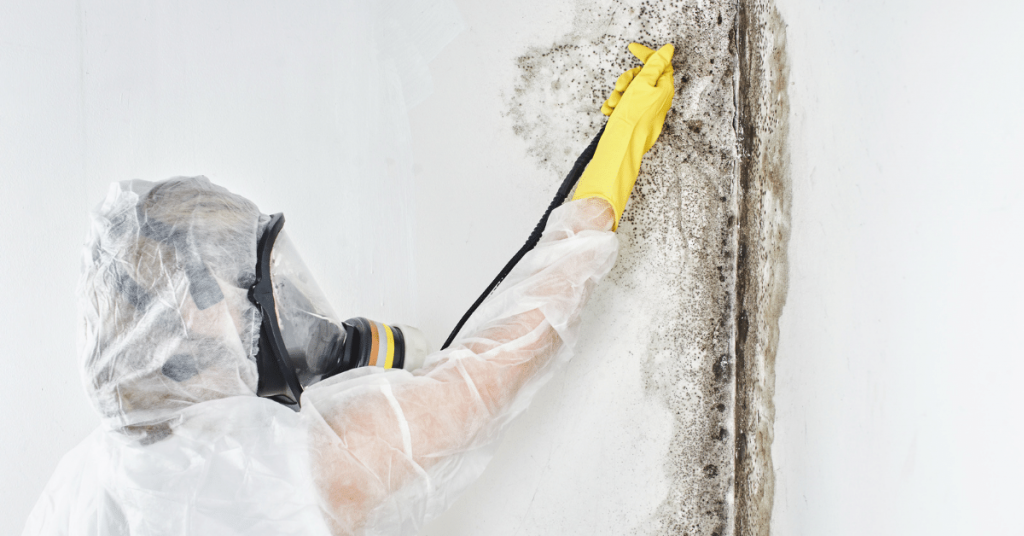
There are a few ways to ensure you get out all the mold from your carpet and that’s is what we’re going to show you here. But first, you’ll need to understand a bit what mold is to take the necessary precautions.
If you apply all the methods shown here and nothing works or mold keeps coming back, then it’s time to hire a professional to do so.

CAUTION!
When you have slight molding, you can try removing it yourself, but if your carpet is heavily infested, then a professional must do it.
What is mold?
Now, there are multiple types of mold. Some of them are more dangerous than others. So, having mold at home doesn’t mean you are in great danger right away!
Only if you leave it there and don’t do something about it, is when it could get seriously harmful. Mold should always be removed, no matter the type.
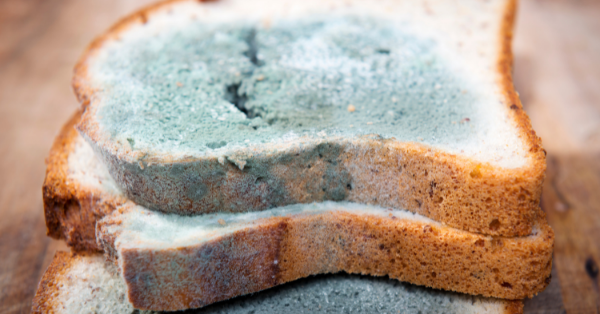
But you can’t deal with it correctly if you don’t know anything about it. That’s why you need to learn what is mold, which type of mold you have and how to address it correctly before doing anything.
Here you have an article about the 12 most common types of mold that you may have at home. Find out which one you have and learn what it may be causing it.
Mold loves to grow in damp and humid places, like basements and bathrooms. They will eat any wet surface they find (textiles, fabrics, wood, paper, paint, etc.), and produce a very nasty smell. That is why, if inhaled or touched it can cause serious respiratory and skin problems.
Here are some of the most common types of mold that can grow in your carpets:
– Aspergillus is one of the most frequent types of mold found in carpets. It isn’t too harmful on healthy adults. It is allergenic but could get toxic if not treated right away.
– Trichoderma is also a type of mold that loves eating anything from wood to textiles. They can harm badly all the structures of a house. So watch out for this little guy! They can also produce allergic reactions.
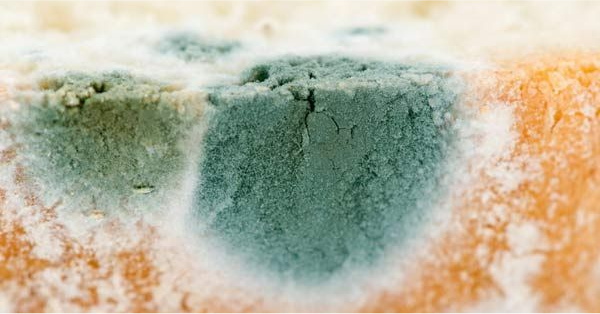
– Cladosporium can cause respiratory problems (such as asthma) on children and seniors. And they spread in small black spots on mattresses and carpets.
– Stachybotrys (aka black mold) is one of the most toxic types of mold and you must be very careful and hire a professional to remove it immediately if you have it at home. The best option if it has widely spread is to replace the whole carpet, just to make sure you’ve removed it completely.
Now that you know a bit more about what mold is, let’s get into all the mold health issues you can face.
Mold health issues
Mold can be very toxic as you’ve already seen and can cause long-lasting health problems, especially on kids, pregnant women and seniors.

Mold can cause allergic reactions and irritations when it is inhaled or touched. These reactions can go along with high-fever symptoms, and flu symptoms such as sneezing, itchy eyes, runny nose and skin rashes. These symptoms can appear immediately or past some time.
It can cause dermatitis and asthma attacks, especially on people who are allergic to mold.
The degree to which it affects us depends on our Mold Sensitivity. These means how sensitive we are to mold exposure. Some people are more sensitive than others. And mold sensitivity can be developed if there’s prolonged exposure to it. Some symptoms related to mold sensitivity are sore throat, skin irritation, itchy eyes, nasal congestion, headaches, etc.
Long exposure to mold can also end up causing lung infections and lots of other respiratory problems.
And last but not least, there are certain types of mold that are very toxic and produce mycotoxins, which can lead to severe and deadly health issues such as cancer, heart and digestive conditions, liver and kidney problems, pulmonary bleedings, etc.

We’re not here to get you all scared but it is something you really need to know to understand the importance of removing mold if you see it at home.
What causes mold on carpet?
As we said earlier, mold will grow wherever there’s humidity. They love moist places with warm temperatures.
High humidity places and water leaks create the perfect home for them. Therefore, those places at home that have water running like bathrooms or laundries, and less ventilation like basements, are more likely to have mold growing all over them.
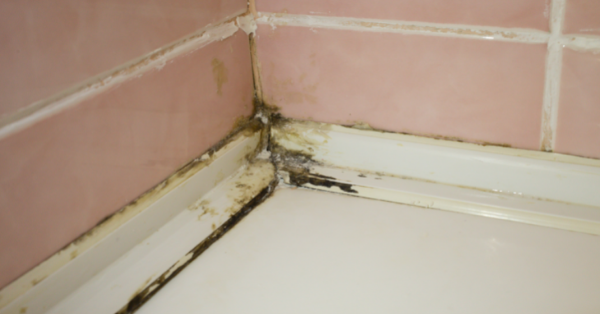
And not only mold! With high humidity, all types of fungi, bed bugs and dust mites are also welcome!
We’ll provide later on a humidity level chart for each room at your house so you know the ideal level of humidity you should have at each room to prevent mold from appearing.
If you want to learn more in-depth al mold-causes and some prevention tips then click here.
Mold identification
You already know that, for a successful removal of mold at home, first you need to know which type of mold it is.
That’s why identification is so important!
Read this article about the 12 most common types of mold to find out which type of mold you have at home and learn what’s causing it and how dangerous it is. This way you’ll know how to address it and see if you can remove it all by yourself or if you need to hire a professional right away.
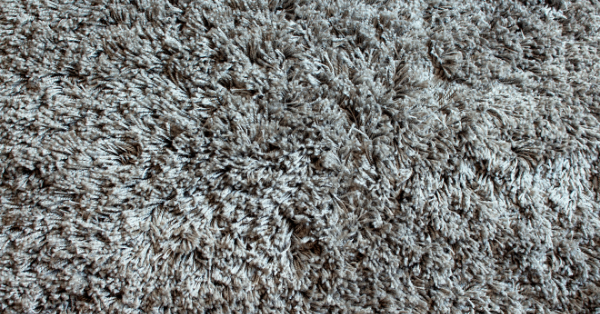
Now, just because you don’t see mold it doesn’t mean there isn’t any growing on your carpets. In fact, when you’re able to see mold on your carpets, it’s usually a severe mold infestation by now. So make sure you stay alert and watch out for any of the following cases:
Carpet discoloration or bad odors: if your carpet starts to smell bad or suffer from color fading, you’re likely to have mold or mildew growing on it.
Wet carpets or wet padding underneath: if you have a water leak and you let your carpets get wet, the damaged area will most certainly become a great place for mold to grow. So watch out and try to dry it as soon as possible!

Stains: mold loves a good stain to settle in, so try to remove stains immediately. If you find an old stain, you haven’t noticed before, have it checked by a home inspector to see if mold has started growing on it.
EPA Guidelines for identifying and removing mold
The EPA (The United States Environmental Protection Agency) has dedicated lots of resources to address mold problems, as it is very common in all US homes.
They say that if the spots of mold have spread wider than 10 sq. feet then the carpet should be replaced. And when hiring a professional to remove it, you need to make sure they know the procedures to remove it completely and without spreading it all over your house. So check their references and ask them to follow the EPA recommendations on this guideline.
EPA TIP
If you already have health problems, it’ll be better if you don’t try to remove mold by yourself and hire a professional directly.
Mold Prevention Tips
After learning what mold is and all the health issues it can cause, you might want to prevent it at all costs.
And you’ll be glad to hear it is quite easy! There are many ways and thing you can do to prevent mold from growing in your home and carpets, but they all have one main goal: control the moisture and humidity indoors.
If the humidity level at your house is too high then mold will grow in no time. And not only mold, but also dust mites, bed bugs and more!
Here you have some tips to prevent mold from growing in your beautiful carpets and rugs!
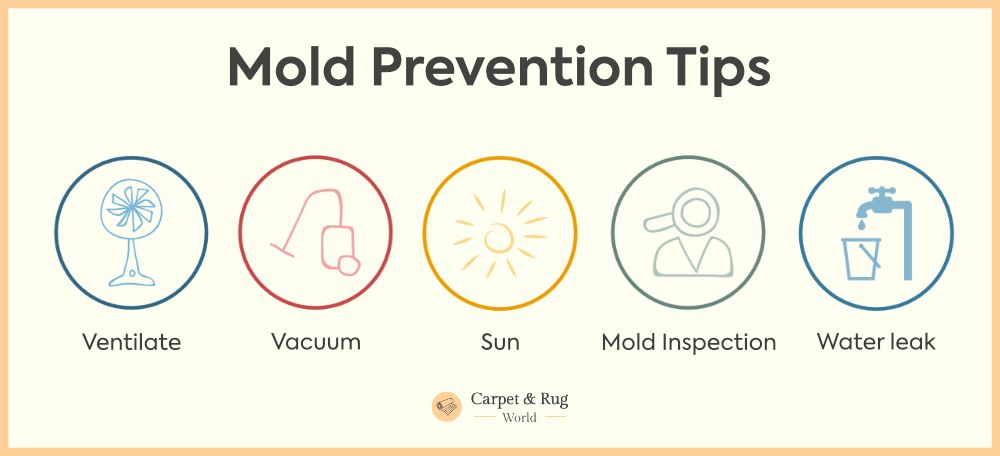
1. Ventilate regularly. Allowing the air to flow regularly will not only improve the air quality you breath but also reduce the humidity and moisture. This will drastically reduce the risk of having mold at home. You can also use a dehumidifier if you live in a very humid area.
2. Vacuum, vacuum. Obvious but works.< Mold loves dust and dirt, so if your carpets are all dirty, they will become the best place for them to live. Eliminate this risk by vacuuming your carpets on a schedule. And if you can use a HEPA filter with your vacuum cleaner, you’ll get almost all those mold spores out!
3. Let the sun in! Mold grows in humid and dark places. They can’t stand the light. If you leave the curtains open during the day while the sun is out, you’re safe! You can also leave the lights on but that’s a less eco-friendly solution.
4. Perform a mold inspection once in a while. How often will depend on how fast your house gets moist daily and if you live in a humid place or not.
5. Avoid putting potted plants and firewood directly on your carpets.
6. Check out for water leaks.
7. Don’t choose cheap carpet paddings. It will end up costing you more money! Look out for an anti-bacterial ones.
Taking preventive measures will save you a ton of time and money, you won’t believe it! If you want to know more about the different types of carpets and paddings, click here.
Now, we said earlier we would talk and show you a humidity level chart. Generally speaking, the ideal humidity level you should have at home in summer should be around 45%, and in winter it should be around 35%.
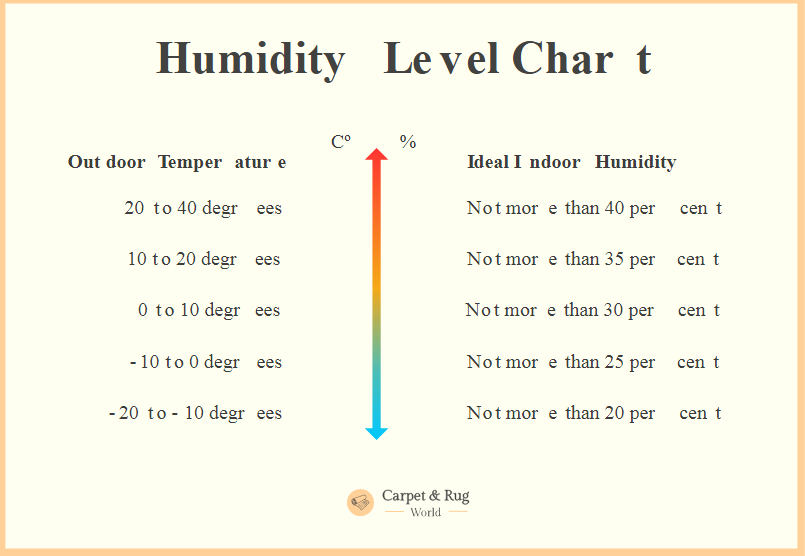
Here is how the humidity level should be in these rooms of your house:
– Bedroom: it should be a bit higher to prevent having dry skin problems.
– Bathroom: it can get to 50% and still be ok.
– Living room: this room should be as low as 30% to prevent mold growth.
If you still want to deepen your knowledge on how to prevent mold growth on your carpets, you have more tips here.
Mold Removal Methods
We’re getting into the juicy part!
There are various methods to get mold out of carpets. They all use at least one of these agents you may have at home, as they work great as moth-killers: bleach, vinegar, ammonia, baking soda and hydrogen peroxide.
With any of these, you can create a cleaning solution at home to kill all the mold spores without damaging your carpets!
CAUTION!
Don’t mix these ingredients unless a professional tells you it’s safe to do so. They will become extremely toxic and dangerous.
Some of these are more toxic than others, so beware and try them first on a hidden area of the carpet to see if they damage the carpet’s fibers.
– Highly toxic: ammonia and bleach (they can produce color fading)
– Less toxic: vinegar, baking soda and hydrogen peroxide (they are less toxic but also less effective) Other things you can try and use to get mold out of carpets are the following:
– HEPA vacuum: you may think it is not necessary, but it can be very helpful. HEPA vacuums are certified to remove, better than normal vacuums, almost all mold spores you may have in your carpets.
Here you have a great option if you want to buy one!
[amazon link=”B004Q4DRJW” title=”Shark Navigator Upright Vacuum for Carpet and Hard Floor with Lift-Away Handheld HEPA Filter, and Anti-Allergy Seal”/]
[amazon box=”B004Q4DRJW”]
– Steam Cleaner: if you don’t have it, you can rent it (as well as the HEPA Vacuum). And it works miracles when trying to remove a mold infestation. The only drawback is the drying time. You need to be careful and make sure the carpet dries completely. If not, you’ll get mold in no time and you’ll have spent your time and money for nothing.
If you’re on the market for a carpet steam cleaner, check our post on the Best Carpet Steam Cleaners of 2022. But if you’re looking for a cheap yet good quality steam cleaner that will do the job good enough for mold, here you have this great option:
[amazon link=”B077S6KQ88″ title=”Steam Mop Cleaner ThermaPro”/]
[amazon box=”B077S6KQ88″]
– Commercial mold remover solution: you can use a commercial cleaner to quickly eliminate mold that is difficult to reach and remove if anything else has worked. Always read the manufacturer instructions carefully before applying it.
Try this one! You won’t be dissapointed:
[amazon link=”B0017KE9OA” title=”Mold Armor FG516 Mold Blocker”/]
[amazon box=”B0017KE9OA”]
Precautions before mold removal
You’re about to get physical and mold can be harmful. So take all the precautions needed and more. You’ll have to scrub a lot, so prepare yourself to avoid having to go to the emergency room.
This is all the material you will need to protect yourself:
– textured-grip gloves to make it easier to handle slippery tools
– face mask and protective glasses to protect your eyes and mouth, especially when using toxic products.
– work clothes because when touching the mold, it will release spores and these will fall on you and you don’t want to be, later on, spreading all the spores from your clothes to your carpets all over again. Use something you can throw into the washer right after you’ve finished the job.
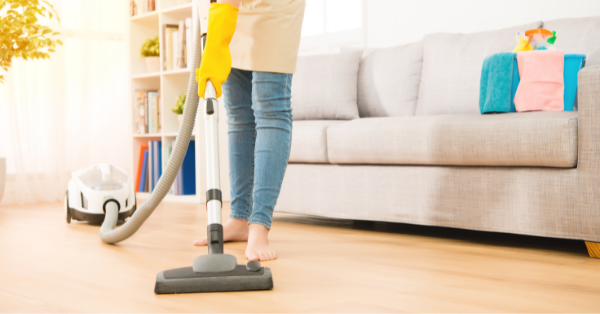
Once you have all the protective gear on you, there are a few steps before applying any method:
1. Identify where the mold is and how deeply it has grown.
2. Ventilate the room as much as possible. To avoid breathing as many spores as possible, make sure you ventilate the room before doing the job but once you start it, close all the doors and windows to prevent all the spores from spreading all over your house.
3. If what you’re cleaning is removable, such as a rug, take it outside and leave it at least 48h in direct sunlight to make sure you kill all mold spores.
4. If you’re cleaning a wall-to-wall carpet, turn on all the lights you have. If you can, place some lights on top the mold-infested area leaving 50cm between. And dry up the carpet as much as possible.
5. With the flat end of a shovel or a knife, remove the large pieces of mold you may have.
6. Use a brush to sweep all the mold traces in the carpet, front and back. Then use the vacuum cleaner or a steam cleaner to clean it. In case you use a steam cleaner you have to make sure you dry the carpet well afterwards.
Once you’ve done all these steps, apply the method you want or all of them one after another, until you make sure all the mold is out.
Method 1: Bleach (toxic)
[amazon box=”B01K8HT54G”]
– Type: harsh, corrosive chemical
– Best for: non-porous materials (countertops, tiles, glass, bathtubs…)
– Never mix with: ammonia (it will release a toxic gas)
– Alternatives: vinegar or borax
Bleach is widely known for killing all types of mold when you pour it on top but it has a few drawbacks you need to know.
If you have a dyed carpet, it will leave a stain if you apply it directly, and will destroy many other materials. The only way to try and solve this problem is to dilute it with at least the double quantity of water and spray it evenly over the mold.
It is also very harmful to your skin, so always use gloves when dealing with this ingredient!
The positive side is it will leave any surface sanitized and mold-resistant.
Now, it will only be really effective in non-porous materials (i.e. glass, bathtubs, countertops, etc.) as it will only clean the surface. So, when it comes to cleaning mold on carpets, especially if it has grown deep down, it’ll be better if you try other mold removal products before.
Another reason to try another product before is that, when applying bleach to a carpet, its water component will be absorbed into the fibers of the carpet, increasing the moisture and making it a more ideal place for mold to grow. And while the mold on the surface may be killed, the mold that’s in the roots will be left intact. And it will grow again.
How to apply it:
1. Mix water and bleach in the following ratio: 1 cup of bleach per 10 cups of water
2. Apply the solution in a hidden space to make sure it is safe to use and doesn’t damage the fibers.
3. Once your sure it’s safe to use, spray it on top of the mold infestation.
4. Let it dry. You don’t need to rinse it afterwards as it will act as a barrier for new mold in the future.
Method 2: Ammonia (toxic)
[amazon box=”B002M8NEDS”]
– Type: harsh, toxic chemical
– Best for: non-porous materials (countertops, tiles, glass, bathtubs…)
– Never mix with: bleach (it will release a toxic gas)
– Alternatives: vinegar or borax
It works pretty much the same as bleach. It will be ineffective in porous material such as wood or textiles. You can use it to kill the mold on the surface but it won’t get to the mold underneath.
And even if it kills all the mold on the surface, dead mold spores also produce allergic reactions so you’d have to keep cleaning and vacuum to get it all out.
Remember, often cleaning products already contain ammonia.
How to apply it:
1. You have to create a mixture of 50% water and 50% ammonia (make sure you’re using “clear ammonia”!)
2. Spray it all over the mold-infested areas and leave it for a couple of hours.
3. Once a few hours have gone by, wipe it out with a damp towel.
Method 3: Detergent (mild chemical)
[amazon box=”B07F46BDDP”]
– Type: toxic if swallowed
– Best for: non-porous materials (countertops, tiles, glass, bathtubs…)
– Mix with water to create a mild mold removal solution
A mixture of water and detergent or dishwashing liquid is great for removing mold from countertops and bathtubs. It won’t kill mold but will help to remove it.
How to apply it:
1. Create a solution based on detergent and water in a bucket.
2. Take a sponge or a brush and use it to apply the mix on the mold area and create a soapy texture on top.
3. If you can take it outside, let it dry in direct sunlight. If not, try drying the surface with a dry towel but don’t use a fan! If you do, you’ll spread the remaining mold spores all over and mold will grow again.
Method 4: Hydrogen Peroxide (natural)
[amazon box=”B07NFTM4ZY”]
– Type: natural cleaning product, harmless
– Best for: all types of surfaces: textiles, fabrics, wood, tiles, countertops, etc.
It is a bleaching agent so be careful with dyes!
You can mix it with vinegar for a more aggressive cleaning solution.
This ingredient works great as an anti-fungal product but it’s also great as an anti-viral and anti-bacterial. It is completely safe to use and won’t damage your carpets.
Make sure you have the 3% concentration Hydrogen Peroxide and get started with this method!
How to apply it:
1. Spray the 3% hydrogen peroxide with a spraying bottle all over the mol-infested area.
2. Let it sit for 10 minutes. This will kill all the mold spores.
3. Use a stiff brush to scrub the area.
4. Wipe it afterwards to remove the remaining mold spores.
Method 5: Vinegar (natural, mild acid)
[amazon box=”B07985NMQD”]
– Type: natural cleaning product, mild acid
– Best for: all types of surfaces: textiles, fabrics, wood, tiles, countertops, etc.
You can use it alone or mix it with water and/or borax to create a natural mold removal. You just have to mix 1/2 cup of white vinegar powder, 1/2 cup borax and 1 cup of water.
Vinegar is a mild acid that can kill almost all types of mold, with the plus of being totally natural, and therefore, safe to use! It is non-toxic and it won’t release dangerous fumes, while bleach and ammonia do.
How to apply it:
1. Put some white vinegar or distilled vinegar on a spray bottle (If you don’t like the smell, mix vinegar with water, baking soda or borax to reduce its scent)
2. Apply it on the mold affected area and let it sit for a couple of minutes
3. Use a stiff brush to scrub thoroughly.
4. Dry the area with a fan or hairdryer.
Method 6: Baking Soda (natural)
[amazon box=”B00HNSJSX2″]
– Type: natural cleaning product, harmless
– Best for: all types of surfaces: textiles, fabrics, wood, tiles, countertops, etc.
Great for cleaning and deodorizing
Baking soda has multiple uses and removing light mold problems is one of them. I said light because it is a natural ingredient and not as aggressive as bleach, ammonia or detergent.
It’ll also help you get rid of bad odors, stains and any excess of moisture your carpet may have.
You can use it alone or with vinegar if you have a slightly bigger mold problem.
How to apply it (alone):
1. Sprinkle a generous amount on top of the mold area and leave it all night.
2. Vacuum thoroughly in the morning.
How to apply it (with vinegar or water):
1. Mix a cup of vinegar or water, depending on how aggressive you need it to be, with a tablespoon of baking soda and shake it inside a spray bottle.
2. Spray the affected area and let it sit for about 15 minutes.
3. Use a sponge to scrub the mix and remove all the mold from the surface.
4. Rinse the excess of mix and moisture with a damp towel.
5. If you want to prevent mold from growing again, spray again the mixture once it’s dry and let it and don’t clean it.
Method 7: Borax (natural)
[amazon box=”B018HUUK40″]
– Type: natural cleaning product but toxic if swallowed
– Best for: deodorizing, insecticides, herbicides and fungicides
– You can mix it with water and/or vinegar (see how to create it son the vinegar method) to create a natural mold removal.
Borax is a white mineral powder.
If you want to go for a natural remedy, here’s a good option to start with. It won’t emit toxic nor dangerous chemicals and fumes. And you can buy it at the store for only a few dollars in the laundry section!
How to apply it:
1. Create a mix of borax and water in the following ratio 1 cup borax per 10 cups of water.
2. Vacuum first to loosen up all the mold spores.
3. With a scrubbing brush apply the mixture of borax and water on top of the mold-infested area and scrub.
4. Remove the excess of moisture and mold particles to prevent them from spreading and growing all over again. But don’t remove what’s left of the borax-water mix as it will act a barrier to prevent mold from growing again.
5. Let it dry completely.
Method 8: Tea Tree Oil (natural)
[amazon box=”B018J6KIBW”]
Now, this may sound weird but this one may be the best of all natural solutions to get out mold of carpet. It can be a bit expensive (a small bottle can cost $10 in the store), but it’s totally worth the money and just a small amount will do to kill all the mold spores.
It is a harmless essential oil that works as an anti-fungal and anti-bacterial. And it can kill all mold species. Make sure it comes from Melaleuca Alternifolia in the ingredients as not all brands do.
The only thing you need to know beforehand is the strong smell the tea tree oil has. Don’t worry, it will fade out with time.
How to apply it:
1. Create the solution with the following proportions: 1 teaspoon of tea tree oil per cup of water, and place it inside a spraying bottle. You can also use a cloth to spread it out.
2. Spray it on the moldy area and let it be.
There’s no need to rinse off this solution as it will also act as a prevention method to avoid having mold again.
Final Mold removal steps
If you want to really make sure you’ve removed all the existing mold in your carpet, you can use a UV light and place it directly over the mold-infested area for about 24 hours. This trick will kill the remaining mold spores that escaped from your hands and will also remove the excess of moisture!
Once you finish the job it’s very important to clean all the equipment you used to remove the mold. That is because in the process mold spores may have attached to your clothes and tools, and if you don’t clean them, you’ll spread them all over your house again.
Final call: Hire a professional
As we said earlier, there are three situations in which you should definitely hire a professional to get the mold out of your carpets and home:
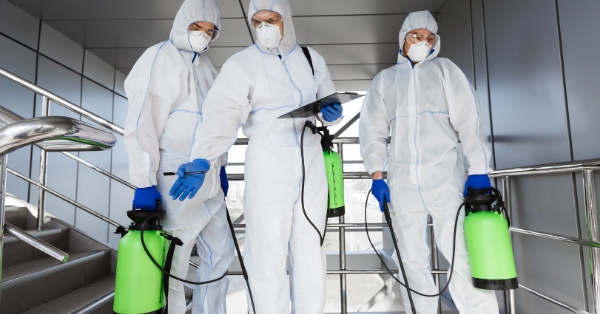
1. You have previous health issues that would not stand the exposure to mold spores.
2. It is too infested to try doing it by yourself (the EPA recommends to call a professional if the infestation is bigger than 10 square feet).
3. You’ve tried all mold removal methods and nothing has worked.
It can feel too overwhelming, I know. It can be too expensive, but ore expensive it’ll be if you let it grow and put yourself and your family at risk.
Call a professional to determine if you have a mold problem and to which extent and if it is too big for you, then let them do the job.
The peace of mind you’ll have afterwards is totally worth it!
Conclusion
Know you have all the information you need to get mold out of your carpets and home. Because knowing what type of mold you have and the different products you can use to remove it, is all you ever need to know.
Don’t try and mix anything you haven’t read here as you could put yourself and your home in great danger.
You know all the steps to successfully remove all mold spores, but remember…
“The best way to get rid of mold is to prevent it from growing”
